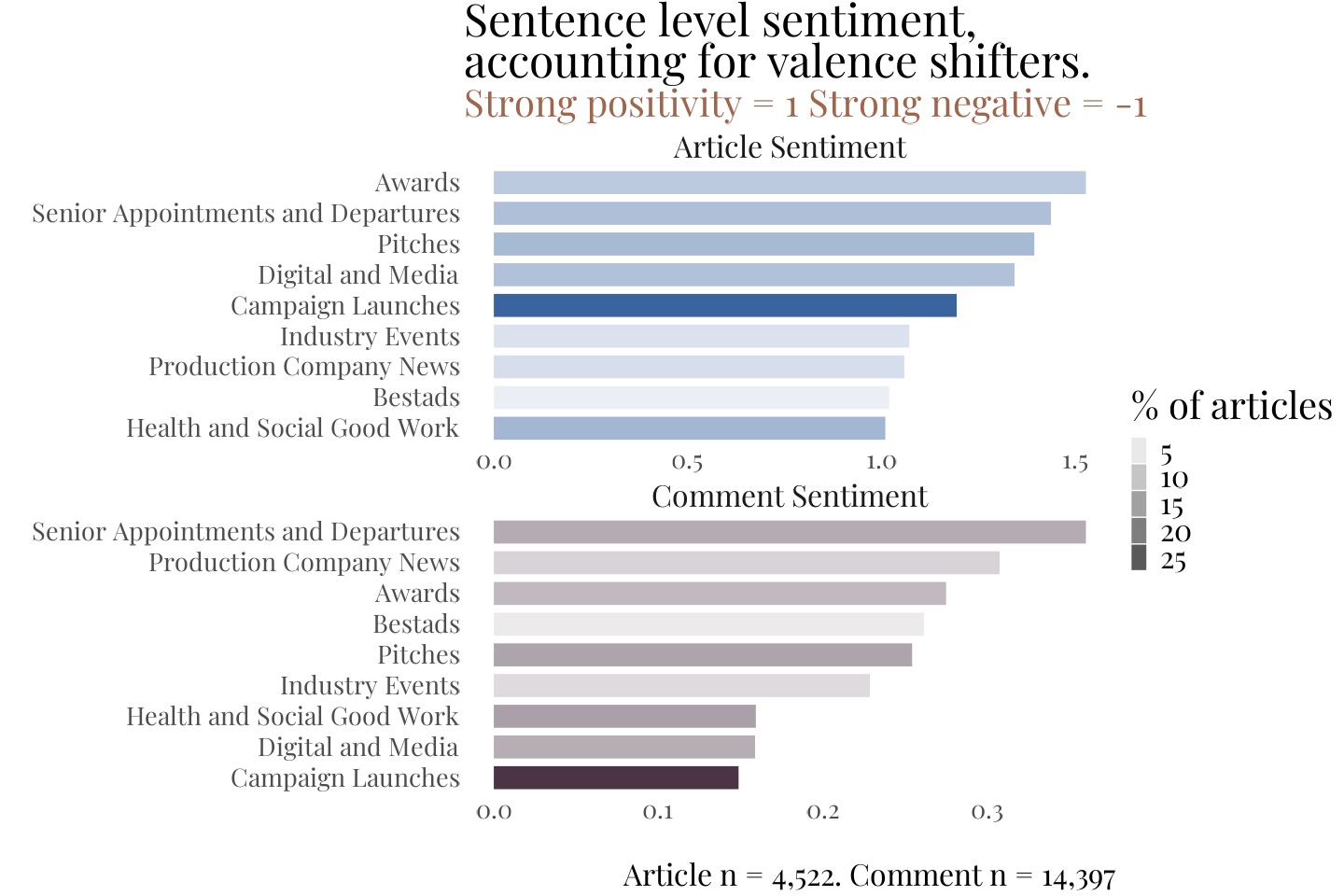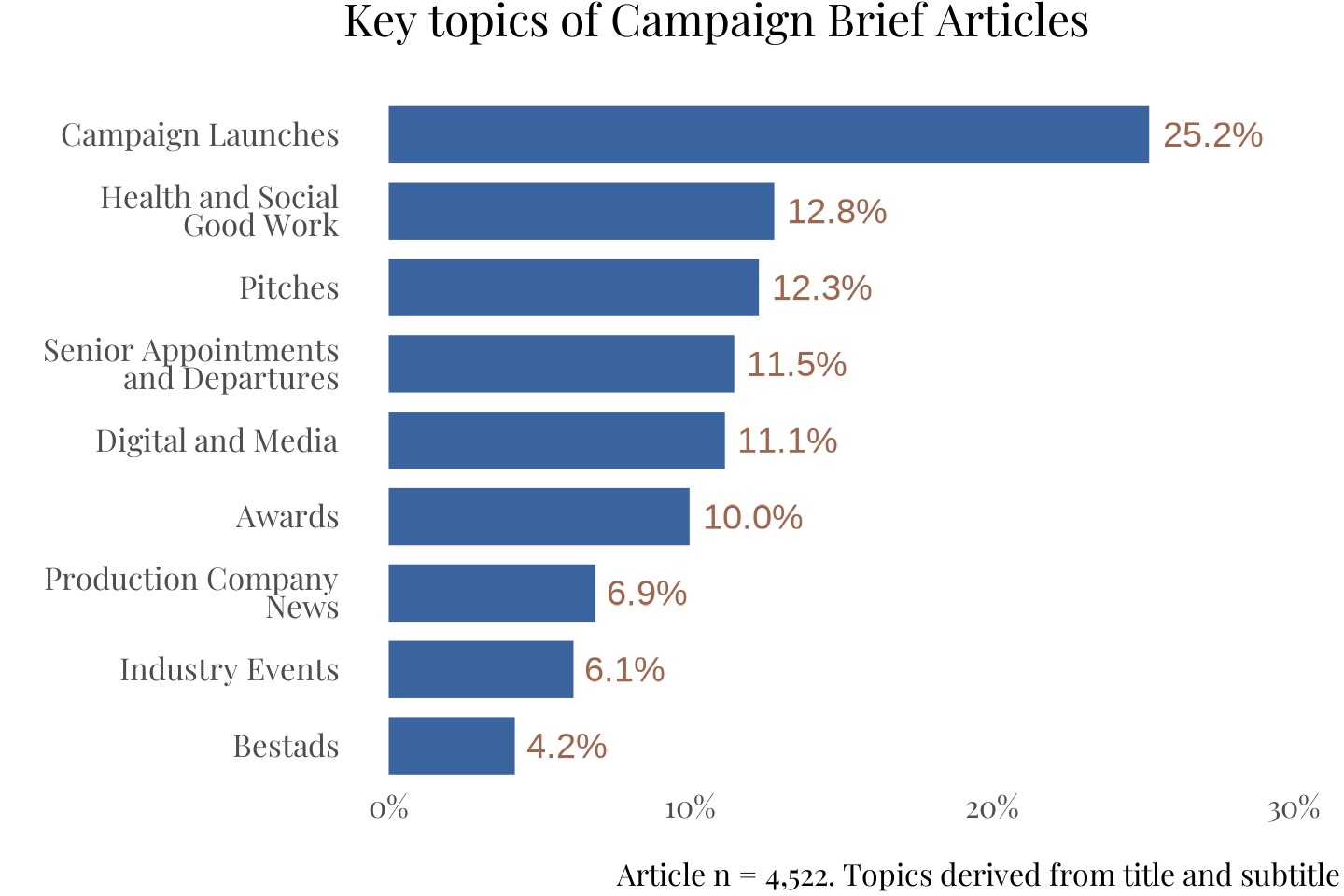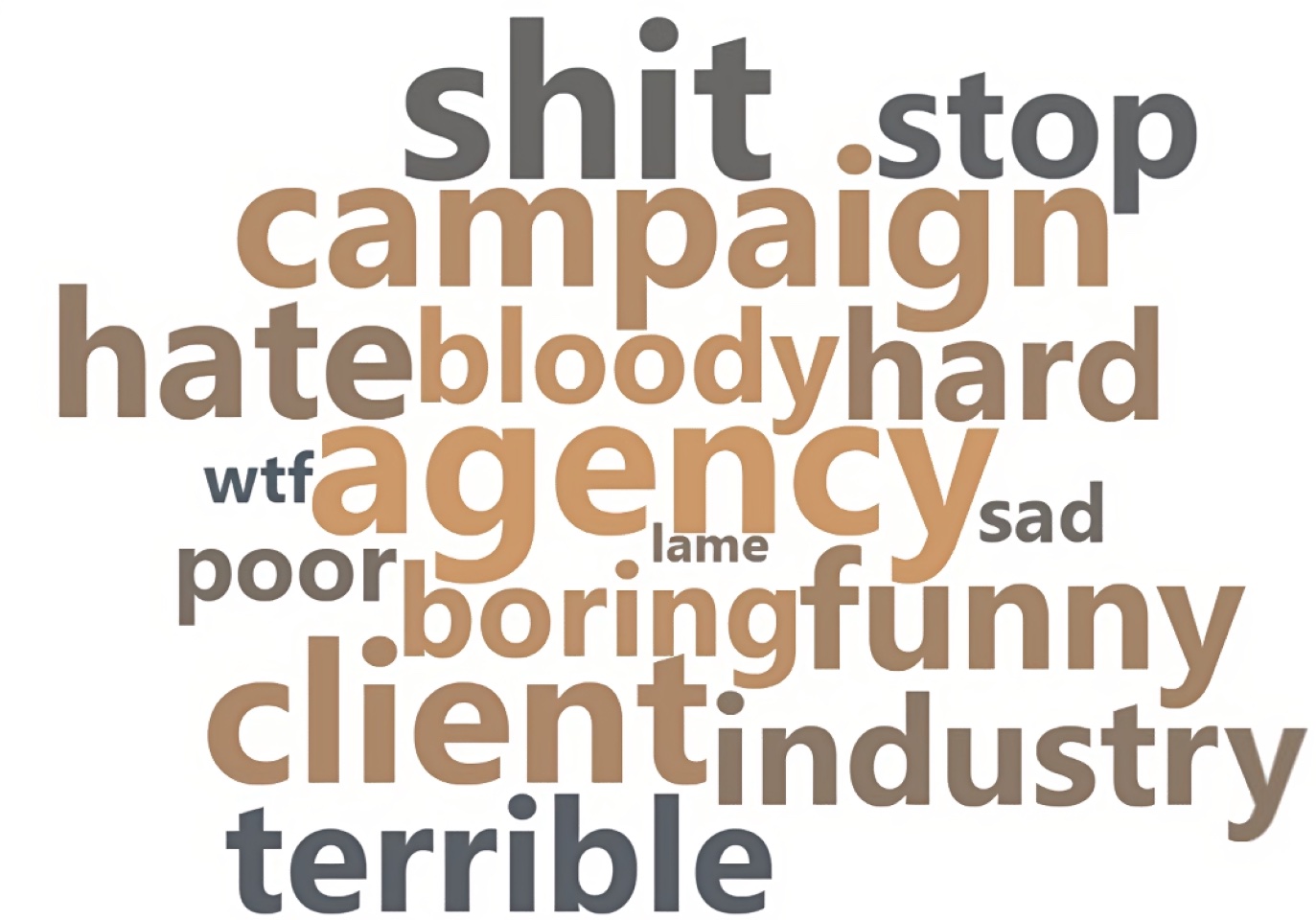Perception vs Reality: Campaign Brief comments are more positive than you might think, suggests new research by Critical Truth

New research has revealed that Campaign Brief commentary is broadly of a positive sentiment. An independently developed report released today from new research and analytics consultancy Critical Truth has used bespoke Natural Language Processing (NLP) methods to model topics and themes within the platform’s articles (n = 4,522) and comments (n = 14,397) over the last three years. The findings suggest that sentiment of comments is net positive, even on the topic of campaign launches.
Says Mark Razzell, founder of Critical Truth: “I was a bit surprised, to be honest. As an avid reader of Campaign Brief I was subscribed to the belief that the commentary is more negative than positive.”
Razzell states that the numerical sentiment of comments on campaign launches, while overall positive, are still lower than all other topics. Around one in five comments are negative: “The question really is – is that a lot? Pennies in a pound, no. But if I put a creative labour of love out there and one in every five people gave me a hard time about it, I’d feel that quite strongly.”


Razzell’s hypothesis is that the reputation of the comment section is the result of negativity bias: “We are more likely to remember negative feedback and furthermore, inaccurately remember it. So, we’ll overstate the veracity of it as well.”

Further analysis revealed the key differences between a positive and negative comment, in the context of a campaign launch. The common and discrete components of a ‘good’ comment say that the work is simple, clever, funny, and well written. A ‘bad’ comment is commonly and uniquely more likely to suggest the work is not funny, boring, and lame.

Furthermore, in the bad comments, a key differentiator is that the industry gets blamed. In good comments, a unique difference is that creatives get praise.
Says Razzell: “If the hypothesis is correct, we may do well to keep negativity bias in mind when reading comments, particularly for your own work. If you get anything bad, remember that it’s not *you* who is likely being blamed. If you’re commenting, it would also do you well to keep this bias in mind. Maybe be a bit more constructive with your feedback, because your words might be hurting someone who is not so different from you.”
Critical Truth (CT) is a research, analytics and strategy consultancy that rejects the pursuit of proof to prove a preconceived narrative, and instead pursues the truth for business-critical decisions and strategy, using the scientific method.
Its services span the product and promotional P’s of marketing through market orientation, consumer research, business intelligence, segmentation, targeting, testing and positioning.
This report has used CT’s market orientation, where CT applies its world leading NLP methods to provide an unadulterated perspective on the culture within a category. Critical Truth partners with agencies, category marketing teams and marketing communications teams.
This work was not commissioned by Campaign Brief.
For a copy of the report, click here to download.

2 Comments
Oh the irony.
No comment is a positive comment then. Let’s run it again with that assumption!